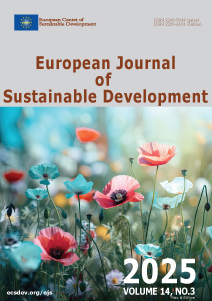A Short Review of the `DNSH` Principle in Romania, from a Sustainable Development Perspective – Theory-Based or Process Evaluation
Keywords:
Do No Significant Harm principle, European institutions, Romanian national and regional programmes, NRRP, process evaluation, monitoring, assessment, theory-based evaluationAbstract
The `Do No Significant Harm` principle was applied, as an innovation `created` by the European Commission and, further on, the European Council and Parliament ever since 2020-2021. In essence, the idea steamed from the European Ecological Pact and was further developed within the European Green Deal, as a mandatory assessment for national Recovery and Resilience Funds.
Looking back to the ecological and environmental assessments previously done for any European funded projects, this article aims to briefly present an analysis of the application of the `DNSH` principle in Romania.
The context of the article starts from the PNNR (Planul National de Redresare si Rezilienta) – Romania’s NRRP and then will shortly analyze the national 2021-2027 European Funded Programmes within the Cohesion Policy.
Furthermore, the article comprises of a short comparative analysis of how the DNSH principle was applied for the Cohesion Policy Programmes and NRRP in Romania, from a theory-based or process evaluation perspective.
As a short conclusion, the DNSH principle in Romania started from the National Recovery and Resilience Plan (NRRP) and, further on, continued for all Cohesion Policy Programmes in the 2021-2027 Cohesion Policy and will expand, in post-2027 European Policies to other funds, as an ex-ante or mandatory assessment.
Keywords: Do No Significant Harm principle, Romania, European institutions, Romanian national and regional programmes, NRRP, process evaluation, monitoring, assessment, theory-based evaluation
Downloads
Published
How to Cite
Issue
Section
License

This work is licensed under a Creative Commons Attribution-NonCommercial 4.0 International License.





